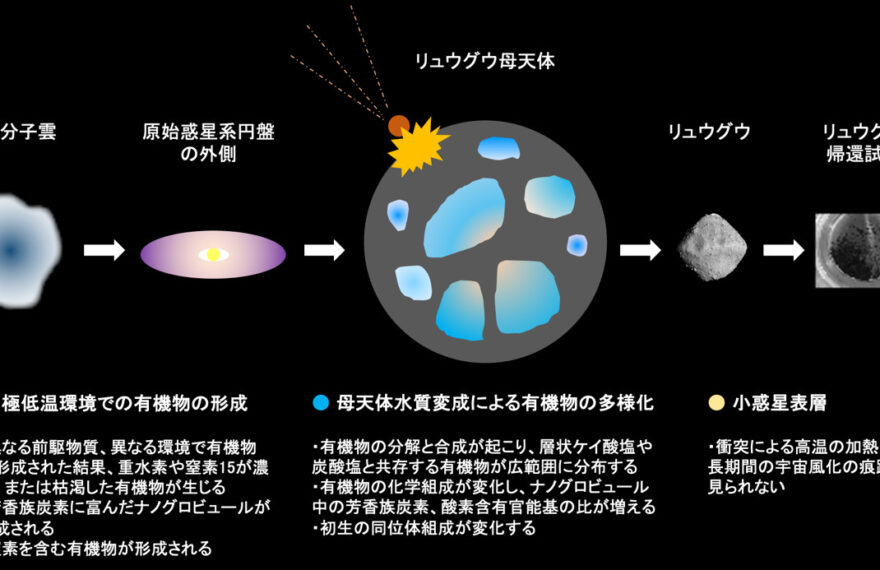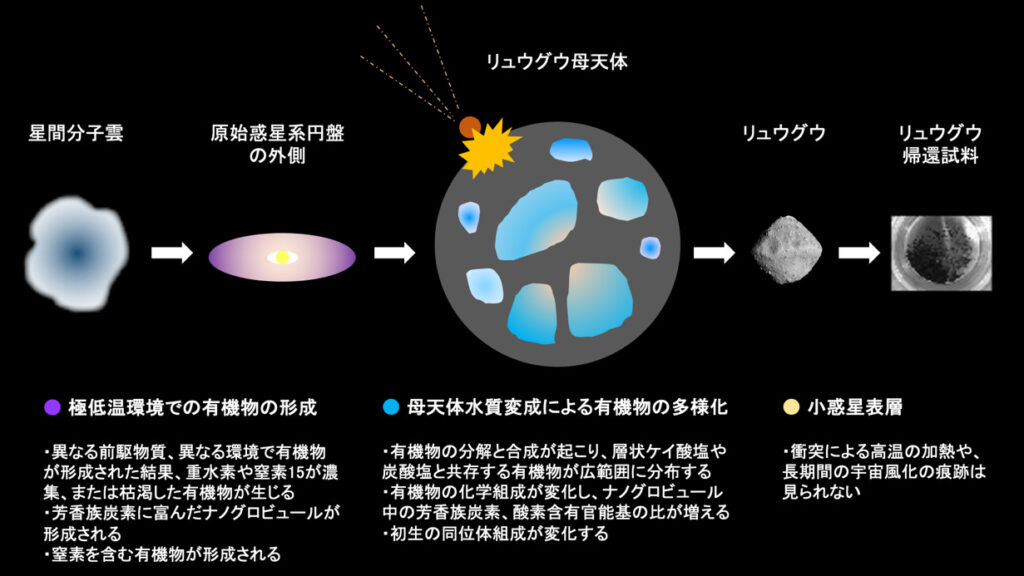[Press Release]
Black Solid Organic Matter in Samples from Asteroid Ryugu

Joint Press Release
Professor Shogo Tachibana, Assistant Professor Taiga Okumura, Professor Yoshio Takahashi, Professor Seiji Sugita, Associate Professor Tomokatsu Morota, Special Staff Shizuho Furuya
The Solid Organic Matter Analysis Team, led by Professor Hikaru Yabuta of the Graduate School of Advanced Science and Engineering, Hiroshima University, analyzed the chemical composition, isotopic composition, and morphology of solid organic matter in the asteroid Ryugu sample brought back to Earth by the asteroid probe “Hayabusa2”. The non-destructive analysis of the Asteroid Ryugu sample (37 microparticles ranging in size from 200 to 900 μm) using various microspectroscopic techniques revealed that the types and proportions of chemical bonds comprising the organic matter in the sample were similar to those of the most primitive Ivuna-type carbonaceous chondrite (CI Group) and primitive Mighei-type carbonaceous chondrite (CM Group). Electron microscopic examination of them revealed nanometer-sized spherical organic matter and thinly spread irregularly shaped organic matter adjacent to or mixed with layered silicates and carbonates. Their coexistence with secondary minerals produced in Ryugu’s parent body is evidence that these organic materials also originated from reactions with liquid water in the parent body. The absence of graphite-like ordered structures in the Ryugu samples means that the organic matter in the Ryugu samples analyzed was not heated to high temperatures in the parent body interior or by impact.
In addition, the isotopic composition of the Ryugu sample revealed regions of deuterium and nitrogen15 concentrations. Such isotopic compositions are not found in terrestrial organic matter and are known to occur only in low-temperature environments of a few tens of Kelvin (minus 200°C or lower). Thus, the Ryugu organics analyzed are indeed of extraterrestrial origin, and at least some of these organics were formed in cryogenic environments such as interstellar molecular clouds and the outer protoplanetary disk.

For more information, please see
JAXA press release: https://www.jaxa.jp/press/2023/02/20230224-2_j.html
Graduate School of Science press release: https://www.s.u-tokyo.ac.jp/ja/press/2023/8303/
Publication URL: https://www.science.org/doi/10.1126/science.abn9057

